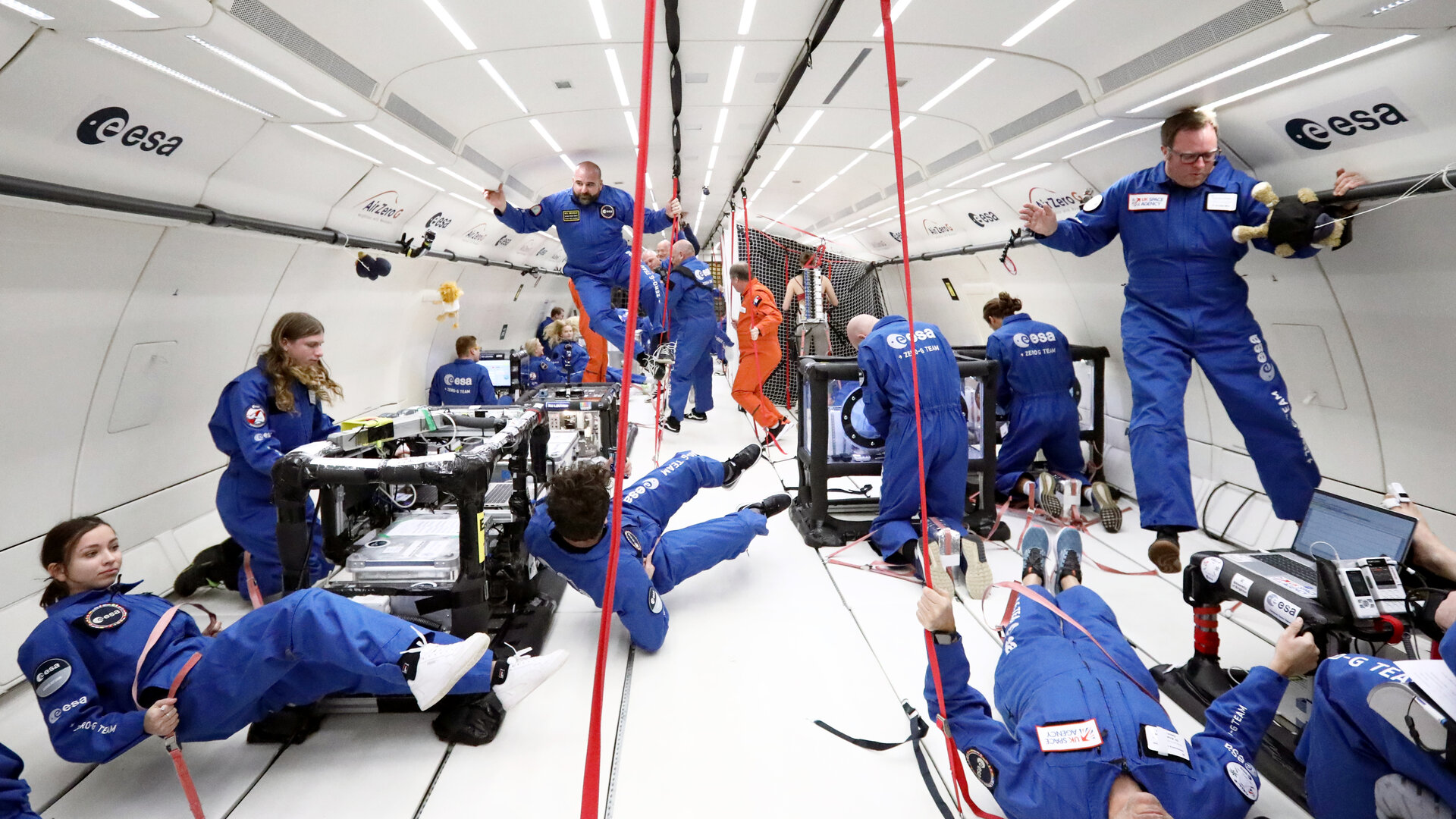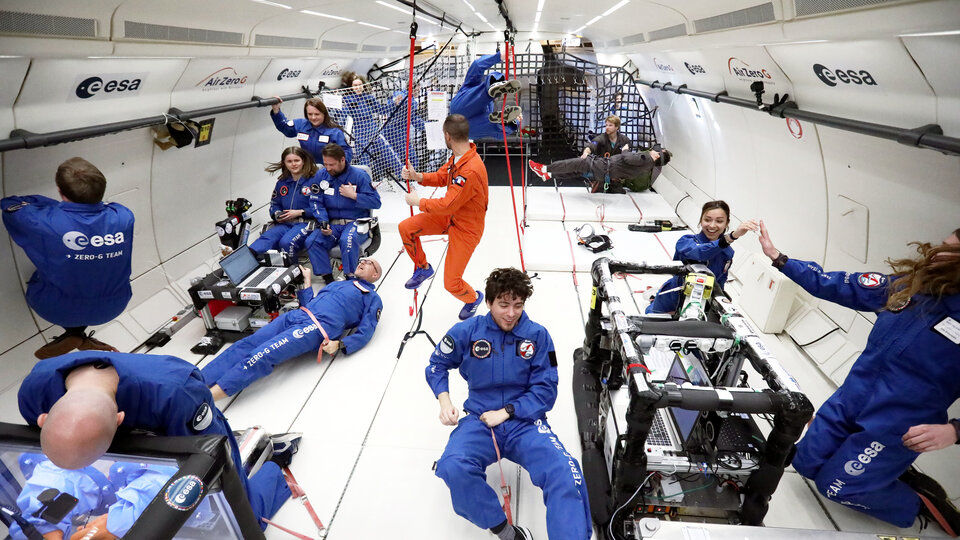'Weightless' flight anyone?
A new application channel is now open for ESA parabolic flights, another way to welcome proposals that study new technologies from both academic institutions and companies.
Parabolic flights provide short periods of 'weightlessness', offering a quick way to test things in microgravity with humans. Researchers use them for short-duration, hands-on scientific and technological investigations, such as training astronauts and validating instruments before they fly to the International Space Station.
ESA is now opening these unique aircraft doors to two types of experiment, for up-and-coming new technologies in a changing space sector: technological and commercial.
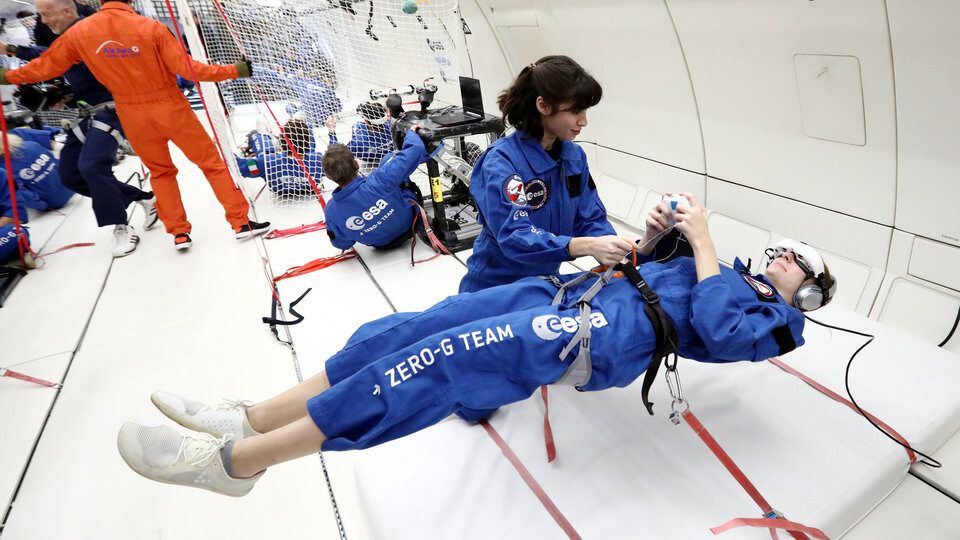
Technological research proposals are welcome from any academic institutions in our Member States. After careful peer review in alignment with ESA’s objectives and missions, the Agency will cover the flight costs for selected experiments.
Commercial entities are also welcome to apply to raise the Technology Readiness Levels of prototype space hardware to develop these into viable commercial products. Whereas previously it may have been necessary for companies to book the entire aircraft, ESA now offers access on a pro-rata basis so companies need to pay only for the fraction of resources they use during the parabolic flights.
Flying high
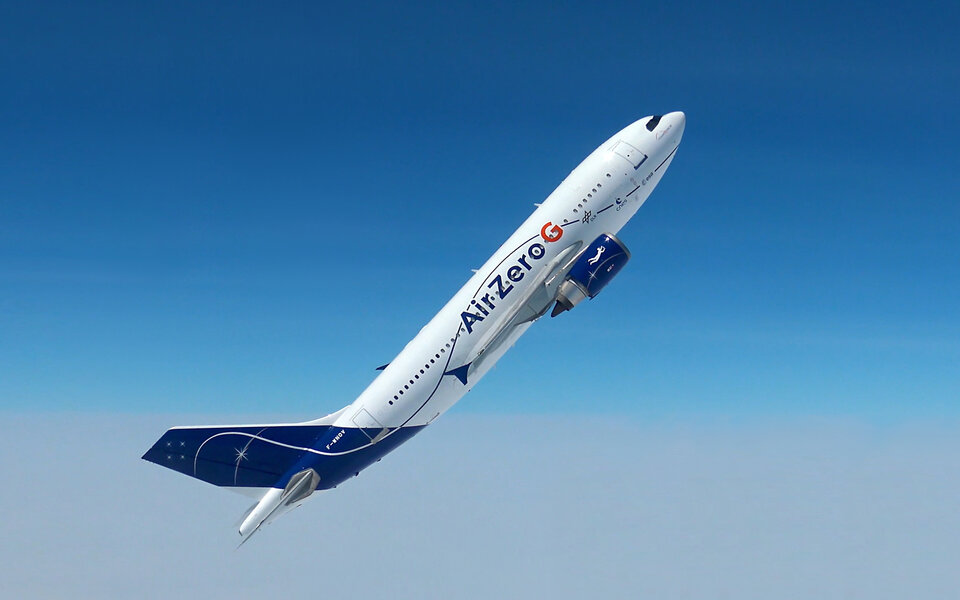
Parabolic flights provide this low-gravity environment by flying an aircraft over a curved trajectory called a parabola. After a heavy pull-up, the pilots inject the aircraft onto the parabolic curve. As the plane slows down, reaches its apex and falls back down, everything inside is in freefall and experiences weightlessness relative to the plane, similar to the sensation you get at the top of a rollercoaster. This short period of weightlessness lasts about 22 seconds, during which people and experiments on board the parabolic flight can experience the same weightlessness as astronauts in orbit on the International Space Station.
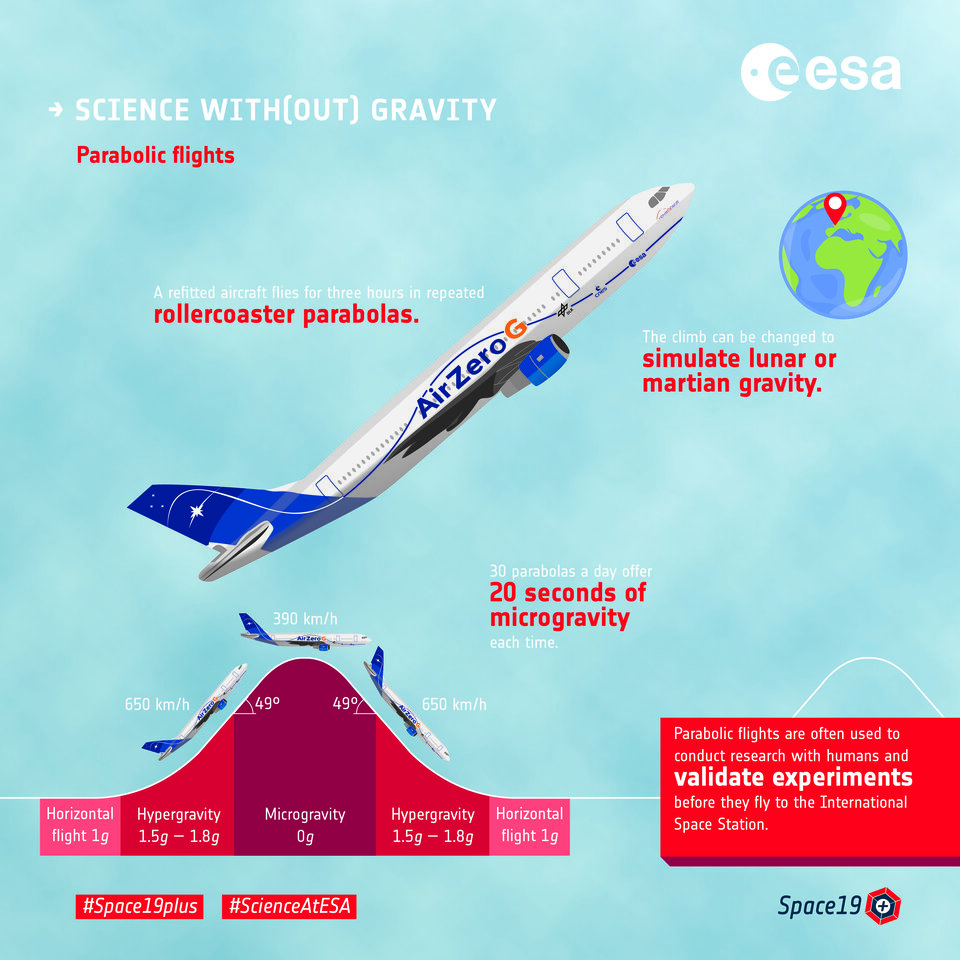
The price to pay for this free-floating freedom is two short periods of hypergravity during which everything weighs almost double for 20 seconds: first when the aircraft pulls up sharply to reach the weightless curve and then again when it pulls out sharply afterwards to return to a normal flight path.
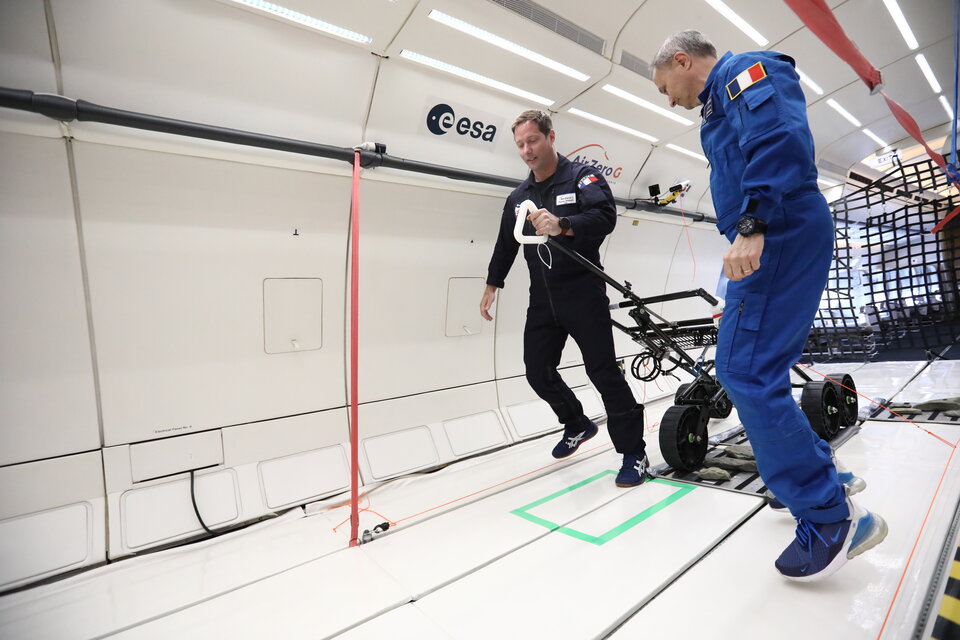
Each parabola takes about one minute to complete and is repeated 31 times in one flight, providing a total of about ten minutes of zero-gravity. A typical parabolic flight campaign consists of three flights, giving about 30 minutes of 'weightlessness' over 93 parabolas.
The aircraft can also fly over a gentler trajectory, providing partial gravity like on the Moon or Mars. Lunar and martian gravity levels are not only scientifically interesting but it is also useful to test the effect on humans and equipment before travelling to these destinations.
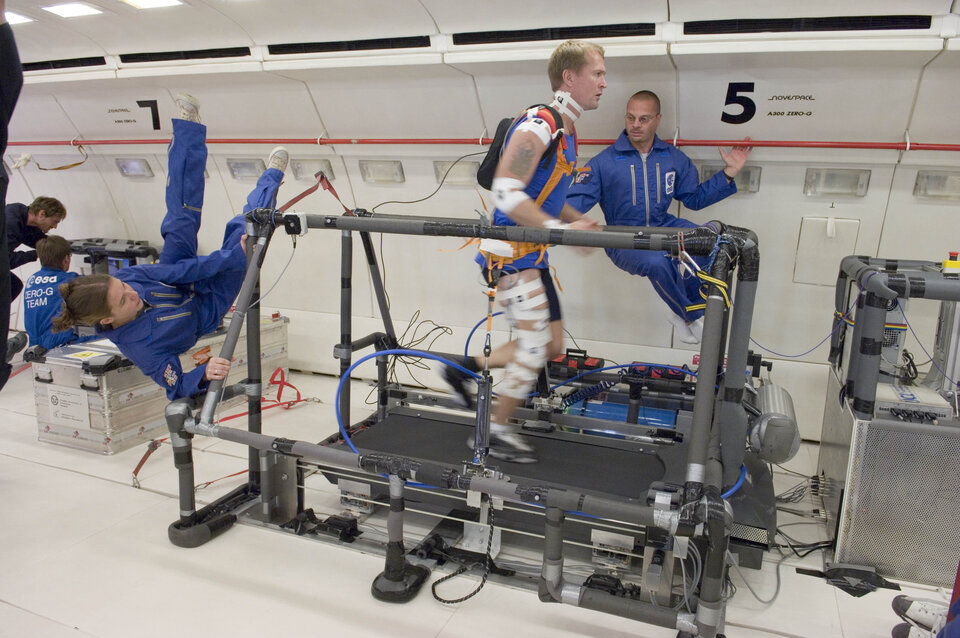
ESA has been conducting parabolic flights since the 1980s under a contract with Novespace and their dedicated aircraft, today the A310 Zero-G, to perform at least two campaigns per year. The flights provide European scientists with access to a repeatable, low-gravity research environment. Hundreds of experiments have flown over thousands of parabolas, enabling extensive scientific endeavours across many disciplines and resulting in a huge legacy of publications.
Apply now!
For more information and how to apply, visit the new application channel. ESA’s parabolic flight team looks forward to working together with new teams of aerospace engineers and collectively developing future space technologies.
Note: for scientific applications please use this channel; for education opportunities please apply here.


